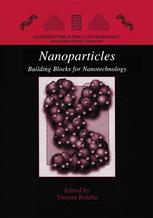

Most ebook files are in PDF format, so you can easily read them using various software such as Foxit Reader or directly on the Google Chrome browser.
Some ebook files are released by publishers in other formats such as .awz, .mobi, .epub, .fb2, etc. You may need to install specific software to read these formats on mobile/PC, such as Calibre.
Please read the tutorial at this link: https://ebookbell.com/faq
We offer FREE conversion to the popular formats you request; however, this may take some time. Therefore, right after payment, please email us, and we will try to provide the service as quickly as possible.
For some exceptional file formats or broken links (if any), please refrain from opening any disputes. Instead, email us first, and we will try to assist within a maximum of 6 hours.
EbookBell Team

4.0
96 reviewsThe integration of top-down lithographic techniques with synthetic organic and inorganic technologies is a key challenge for the development of effective nanosca1e devices. In terms of assembly, nanoparticles provide an excellent tool for bridging the gap between the resolution of electron beam lithography (-60 nm) and the molecular level. Nanoparticles possess an array of unique properties associated with their core materials, including distinctive magnetic, photonic and electronic behavior. This behavior can be controlled and applied through monolayer functionalization and assembly strategies, making nanoparticles both scaffolds and building blocks for nanotechnology. The diverse structures and properties of nanoparticles makes them useful tools for both fundamental studies and pragmatic applications in a range of disciplines. This volume is intended to provide an integrated overview of the synthesis and assembly of nanoparticles, and their applications in chemistry, biology, and materials science. The first three chapters focus on the creation and intrinsic properties of nanoparticles, covering some of the myriad core materials and shapes that have been created. The remaining chapters of the book discuss the assembly of nanoparticles, and applications of both discrete particles and particle assemblies in a wide range of fields, including device and sensor fabrication, catalysis, biology, and nanosca1e electronic and magnetic systems.